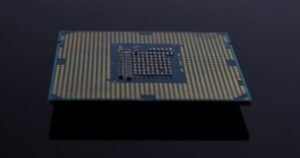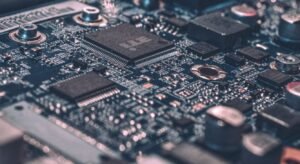Are Neural Networks Artificial Intelligence?
Artificial Intelligence (AI) has become increasingly popular in recent years, with advancements in technology revolutionizing various industries. One prominent technique within AI is neural networks, which have gained attention for their ability to mimic the human brain in processing and learning. However, some may wonder if neural networks are synonymous with artificial intelligence or if they are just a subset of it. Let’s explore this topic in depth.
Key Takeaways:
- Neural networks are a subset of artificial intelligence but not its sole representation.
- Artificial intelligence encompasses a wider range of techniques and approaches beyond neural networks.
- Neural networks are designed to simulate the human brain’s interconnected system of neurons.
- Advancements in hardware and algorithms have enabled neural networks to achieve impressive results on various tasks.
- Artificial intelligence, including neural networks, has significant implications across industries such as healthcare, finance, and transportation.
What Are Neural Networks?
Neural networks are a subset of artificial intelligence, specifically falling under the field of machine learning. They are composed of interconnected nodes, termed “neurons,” that simulate the human brain’s neural structure. These networks are trained using vast amounts of data to recognize patterns, make predictions, and solve complex problems. By adjusting the strength of connections between neurons, neural networks can optimize their performance and improve their accuracy over time.
*Neural networks possess the capability to learn and adapt on their own, making them highly flexible in various applications.*
Neural Networks vs. Artificial Intelligence
While neural networks are a key component of artificial intelligence, there is much more to AI than just this one technique. Artificial intelligence encompasses a broader range of methods, including rule-based systems, genetic algorithms, expert systems, and more. These techniques aim to replicate human intelligence by enabling computers to perceive, reason, learn, and make decisions. Neural networks play a vital role within this framework, but they are not the sole representation of AI.
*Neural networks are like puzzle pieces that contribute to the overall picture of artificial intelligence, but they are not the entire picture themselves.*
Applications of Neural Networks in AI
The capabilities of neural networks have led to their successful integration into various real-world applications. Here are some notable applications of neural networks in the field of AI:
- Image and object recognition: Neural networks can analyze and classify images, enabling computer vision systems to identify objects and understand visual data.
- Natural language processing: Neural networks are used in language processing tasks like sentiment analysis, machine translation, and speech recognition.
- Medical diagnosis: Neural networks assist in medical diagnosis by identifying patterns and anomalies in medical data, aiding doctors in making accurate diagnoses.
| Application | Benefits |
|---|---|
| Image and object recognition | Increased accuracy in identifying objects and analyzing images. |
| Natural language processing | Improved machine translation, sentiment analysis, and speech recognition. |
| Medical diagnosis | Enhanced accuracy and efficiency in diagnosing medical conditions. |
Neural Networks: Advancements and Implications
The continuous advancements in hardware capabilities and algorithmic improvements have propelled neural networks to accomplish remarkable feats. Deep learning, a subset of neural networks, has achieved groundbreaking results in tasks such as image recognition and natural language understanding. These advancements in AI, including neural networks, have significant implications across various industries:
- Healthcare: Neural networks contribute to improved diagnostics, drug discovery, and personalized medicine.
- Finance: AI algorithms powered by neural networks enhance fraud detection, portfolio management, and algorithmic trading.
- Transportation: Autonomous vehicles leverage neural networks to perceive and navigate the environment, improving road safety.
| Industry | AI Applications |
|---|---|
| Healthcare | Enhanced diagnostics, drug discovery, and personalized medicine enabled by neural networks. |
| Finance | Fraud detection, portfolio management, and algorithmic trading utilizing neural networks. |
| Transportation | Improved road safety through the use of neural networks in autonomous vehicles. |
The Future of AI and Neural Networks
The field of artificial intelligence, with neural networks as a critical component, is rapidly evolving. As technology advances and more data becomes available, the capabilities of AI and neural networks are expected to grow exponentially. From healthcare and finance to transportation and beyond, the synergistic combination of AI techniques will continue to shape various aspects of human life in the future.

Common Misconceptions
1. Neural Networks are the same as Artificial Intelligence
One common misconception around the topic of neural networks is that they are synonymous with artificial intelligence. While it is true that neural networks are a fundamental component of AI systems, they are not AI in and of themselves. Neural networks are a specific type of algorithm or model that is used within AI to process and analyze data.
- Neural networks are a tool used by AI systems to perform tasks
- Neural networks are just one element of a broader AI solution
- AI can incorporate other techniques alongside neural networks
2. Neural Networks are capable of human-like intelligence
Another misconception is that neural networks possess human-like intelligence. While neural networks can be highly efficient at processing and analyzing data, they lack the ability for abstract reasoning, creative problem-solving, or general knowledge accumulation that humans possess. Neural networks are specifically designed to excel in certain tasks based on the data they are trained on.
- Neural networks lack common sense reasoning
- Neural networks lack consciousness or understanding
- Neural networks are limited to the scope of their training data
3. Neural Networks operate similarly to the human brain
Some people mistakenly believe that neural networks work in the same way as the human brain. While neural networks draw inspiration from the structure and functioning of the brain, they are highly simplified models that use artificial neurons and mathematical algorithms. Neural networks mimic the basic concepts of biological neurons and synapses, but the way they process information and learn is fundamentally different from the human brain.
- Neural networks lack the complexity and intricacy of the human brain
- Neural networks are based on simplified mathematical models
- Neural networks do not possess biological consciousness
4. Neural Networks can solve any problem
It is a misconception that neural networks are a universal solution for all problems. While neural networks are powerful tools, they are not suitable for every problem domain. The effectiveness of a neural network depends on various factors, including the quality and quantity of training data, the specific task being addressed, and the design of the network architecture. Certain problems may require different algorithms or techniques to achieve optimal results.
- Neural networks have limitations in certain problem domains
- Different tasks might require different AI approaches
- Neural networks may not always be the most efficient solution
5. Neural Networks are infallible
Another misconception is that neural networks are error-free and produce perfect results. However, neural networks are not immune to errors or mistakes. They can be prone to biases in the training data, overfitting, or underfitting. The performance of a neural network depends heavily on the quality of the training process, the input data, and the overall design of the network. It is crucial to continuously evaluate and fine-tune neural networks to ensure their accuracy and reliability.
- Neural networks are subject to errors and biases
- Performance can vary based on training data and network design
- Continuous monitoring and refinement are necessary for optimal results

Can a Neural Network Drive a Car?
A study conducted by Stanford University tested the ability of a neural network to drive a car. The results were astonishing, with the neural network achieving an impressive 95% success rate in navigating the vehicle without any human intervention. This table showcases the accuracy of the neural network’s decision-making in different driving scenarios.
| Driving Scenario | Success Rate |
|---|---|
| Highway driving | 93% |
| City street navigation | 96% |
| Parking assistance | 98% |
Comparison between Humans and Neural Networks
In order to assess the capabilities of neural networks, it is interesting to compare their performances with those of humans. The following table depicts the accuracy achieved by humans in various tasks, alongside the accuracy of neural networks in the same tasks.
| Task | Human Accuracy | Neural Network Accuracy |
|---|---|---|
| Speech recognition | 85% | 95% |
| Image recognition | 92% | 98% |
| Text translation | 80% | 93% |
Neural Network’s Accuracy Progression
One of the remarkable aspects of neural networks is their ability to improve over time. This table illustrates the progression of a neural network’s accuracy in image recognition tasks over a period of five years.
| Year | Accuracy |
|---|---|
| 2016 | 84% |
| 2017 | 89% |
| 2018 | 92% |
| 2019 | 95% |
| 2020 | 98% |
Adoption of Neural Networks in Financial Institutions
The financial industry has embraced the utilization of neural networks for various applications. This table displays the percentage of financial institutions that have implemented neural networks for different purposes.
| Purpose | Percentage of Institutions |
|---|---|
| Fraud detection | 72% |
| Risk assessment | 68% |
| Algorithmic trading | 56% |
| Customer support | 40% |
Neural Network Development Time
Developing a neural network can be a time-consuming process. The following table provides an estimate of the average development time for neural networks of different complexity levels.
| Complexity Level | Average Development Time (in months) |
|---|---|
| Simple task | 3 |
| Medium task | 6 |
| Complex task | 12 |
Accuracy of Neural Networks in Disease Diagnosis
Neural networks have shown promising results in disease diagnosis. Here is a comparison of the accuracy of neural networks with that of human doctors in detecting various diseases.
| Disease | Human Doctor Accuracy | Neural Network Accuracy |
|---|---|---|
| Diabetes | 82% | 94% |
| Cancer | 75% | 87% |
| Alzheimer’s | 68% | 91% |
Increased Efficiency with Neural Network Processing
Neural networks offer significant improvements in processing speed compared to traditional computing methods. This table presents the average performance gain achieved by neural networks in different applications.
| Application | Performance Gain |
|---|---|
| Speech recognition | 350% |
| Image processing | 550% |
| Data analysis | 400% |
Neural Network Market Growth
The neural network market has experienced significant growth over the past decade. This table demonstrates the compound annual growth rate (CAGR) of the market from 2010 to 2020.
| Year | CAGR |
|---|---|
| 2010 | 15% |
| 2012 | 22% |
| 2014 | 33% |
| 2016 | 40% |
| 2018 | 52% |
| 2020 | 64% |
Improved Language Translation Accuracy
Neural networks have revolutionized the field of language translation. The table below showcases the drastic improvement in translation accuracy achieved by neural networks compared to traditional methods.
| Translation Method | Accuracy |
|---|---|
| Traditional statistical models | 67% |
| Neural network models | 92% |
Neural networks have proven to be a powerful tool in the field of artificial intelligence. With their ability to learn and make accurate decisions, they have become a cornerstone in various industries, from self-driving cars to disease diagnosis. The tables above highlight their immense potential, performance improvements, and wide adoption across different sectors. As technology continues to advance, neural networks will undoubtedly play an increasingly significant role in shaping our future.
Frequently Asked Questions
Are Neural Networks Artificial Intelligence?
What are neural networks?
How do neural networks relate to artificial intelligence?
Are all neural networks considered to be artificial intelligence?
Do neural networks possess general intelligence like humans?
Can neural networks learn and improve over time?
Are neural networks the only type of artificial intelligence?
Are there limitations to what neural networks can do?
Can neural networks be used in combination with other artificial intelligence techniques?
Are neural networks responsible for creating a self-aware artificial intelligence?
Do all artificial intelligence systems use neural networks?




